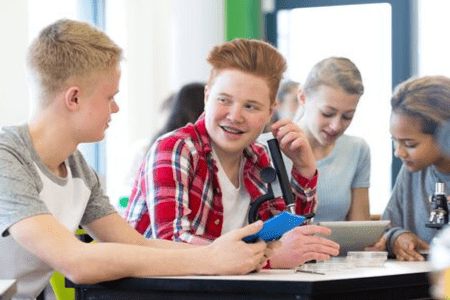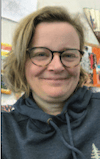
Lighting the Fire
Behind the Teacher's Desk: October 2019
By Lisa Catterall
“Education is the kindling of a flame, not the filling of a vessel”
—Socrates.

“I have to do what? Talk about how a living thing is different than this candle flame? Why?”
Good point. Why would I have you do that?
Well, there are years of research showing that for many kids, thinking and talking about something cause that concept to fall into your memory in a more useful way than passively reading about it or listening to a teacher give you the answer.
“Can you just give me the answer?”
I would like to offer all of my students an open choice as to what activities they complete in order to learn the concepts and knowledge they need, but truthfully, they’re here in school because they don’t yet know how they learn. If they knew how to learn already, I could be removed from the system by just handing them a set of “learning objectives” for the year and letting them figure out how to get there. See ya at the final exam, kids.

Learning how you learn should be one of the major combined goals of every piece of curriculum offered in a program.
This summer, a study came out in which a group of college students were asked what activities in class helped them learn things better. Across the board, the students said they preferred a direct lecture then reading the textbook at home. There was a broad dislike of group collaboration, of arts-integration activities, of hands-on activities, and of, well, creating, doing, and thinking as part of the class. After this survey, the students’ learning was tracked and assessed through two classes with the same learning objectives. One class used strictly lectures, with textbook reading as homework. The “other” class integrated group projects, creative activities, and hands-on learning. Remember, NO students stated they wanted to be in this “other” class.
But the class with those “pointless” learning activities learned much, much more. The “other” class, where the students had to get out of their seats, talk to other people, think things through, do creative things with the material, and, well, just take a more apparently crooked path towards the same destination. This will not surprise any teachers.
When I am choosing lessons each year, particularly those that set the tone for the school year in the opening weeks, I gravitate towards the ones that bring me joy. If I get a little excitement when I touch the handout or the kit or the materials, I choose it.
Of course, that does not mean the kids are going to enjoy my offerings. It only guarantees that my students are going to meet a very happy and enthusiastic teacher.
For me, the more the students are thinking, moving about the classroom, and being creative, the more excited I tend to get about the lesson. Because this is my wheelhouse, it’s been devastating to watch kids (and sometimes parents) get more and more vocal about only liking direct lectures and textbook learning.
In the very distant past, teachers would rule by fear, ruler in hand, and demand silence as students in their one-room schoolhouses sat still and memorized lessons to recite word-for-word. The deeper content didn’t matter and creativity had nowhere to sit.
Fear. The pressure is on and the stakes are high. They need to have the dots connected between what they are doing and whether they will be successful in the future. Something about what we are doing in our 45-minute period each day has a stakehold in creating a positive future. Could they be nervous because, for this generation, the future seems so very uncertain?
Whatever the reason, there’s a story they are telling themselves about their ability to learn that is not helping them. Instead of asking myself how I am going to make sure everyone does a perfect two-column proof by the end of the year (Geometry), a successful six-step picket fence and a distillation column (Chemistry), and can design an ELISA (Biology), I’m asking myself how to get those unhelpful stories to change.
So talk about that candle, kiddo, whether you think there’s a point or not. We’ll start from there, and by June, we will have fanned the flame until it has burned out every instinct you have to say, JUST GIVE ME THE ANSWER. That’s right, we are here to make the crooked and curving path to learning fun again.
Lisa Catterall teaches STEAM, math, science, and art at Mount Madonna School. She has authored curriculum frameworks for California and Kentucky on arts education as a senior associate of the Centers for Research on Creativity. She is a former middle school director and the founder of a STEAM engineering program. She lectures and trains teachers and administrators on innovation in education in Chaoyang District’s foreign experts program in Beijing, China. After spending 14 years in biotechnology, she began her teaching career as a middle school math teacher in her mid-thirties. Lisa has five children and has lived in Santa Cruz County for most of her life.


You May Also Like

When Saying Good-bye is Hard for Babies (and Parents): Ask Nicole October 2019
October 1, 2019
Behind the Masks: Aptos Man has Made Millions on Trick or Treating
October 1, 2019

